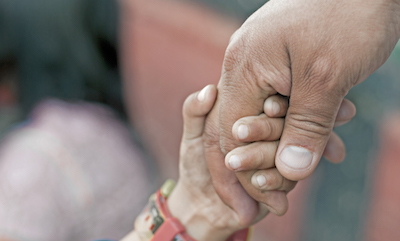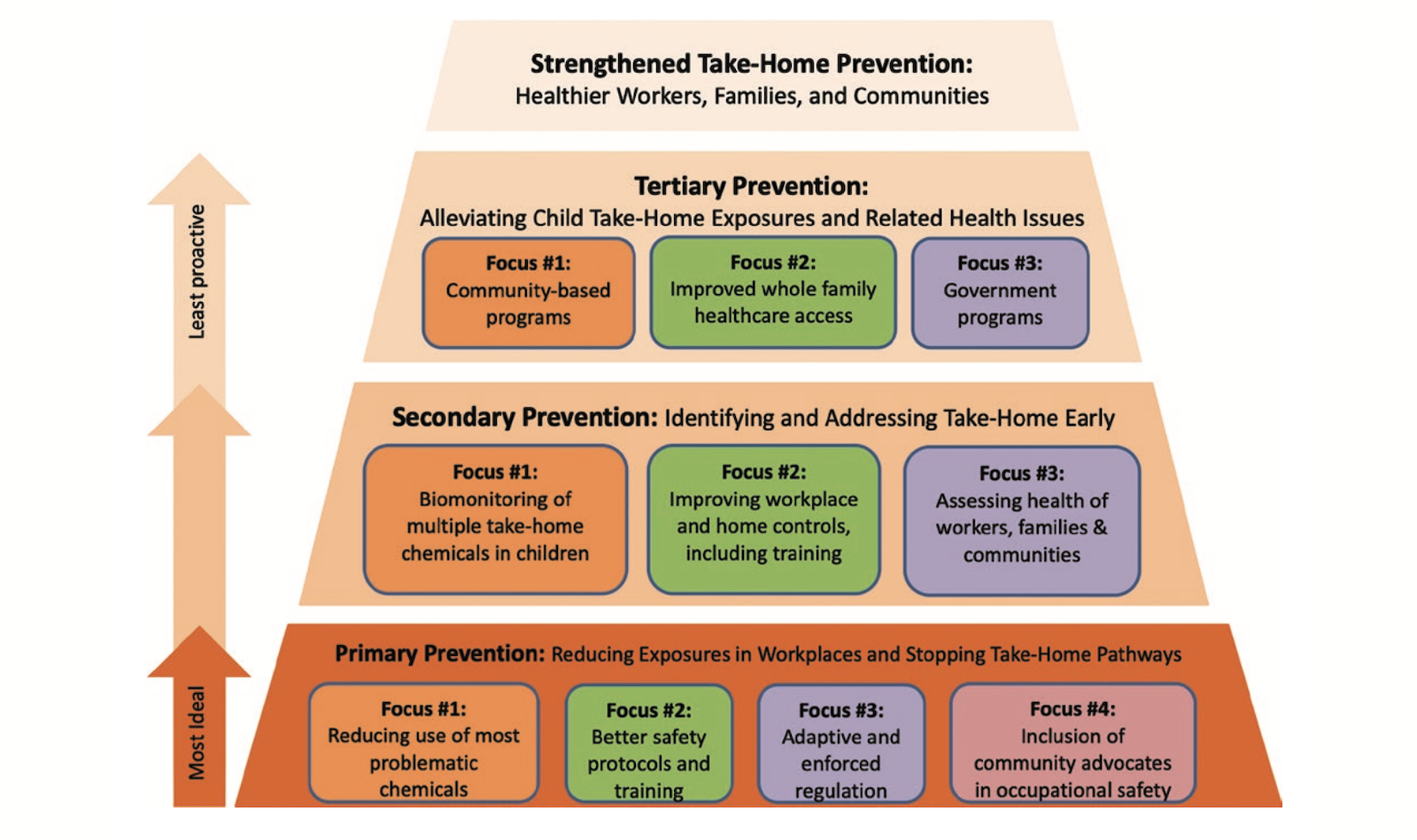‘Take-Home’ Exposures Are Public Health Hazard.
 A new review co-authored by School of Public Health researchers calls for recognition of “take-home” exposures—exposures to toxic contaminants inadvertently brought home from a family member’s work—as a public health hazard. The review was published in Annals of Work Exposures and Health.
A new review co-authored by School of Public Health researchers calls for recognition of “take-home” exposures—exposures to toxic contaminants inadvertently brought home from a family member’s work—as a public health hazard. The review was published in Annals of Work Exposures and Health.
Take-home exposures often fall into a regulatory blind spot, says corresponding author Diana Ceballos, assistant professor of environmental health.
“Although OSHA [Occupational Safety and Health Administration] does regulate some key workplace exposures that can become take-home exposures, such as asbestos, lead, and pesticides, often regulations are not up to date or enforced enough to be protective of health at the family level,” she says.
Ceballos says cases tied to take-home exposures are all too common. When she was an industrial hygienist at the Center for Disease Control and Prevention (CDC), she worked on several such cases, including one where two young children had been poisoned by lead from their father’s work at an electronics recycling facility. Grinding up the lead glass from cathode ray tubes, the father was not exposed to enough lead to immediately affect the health of a grown man, but the lead dust that came home with him on his body and clothing quickly affected the health of his young daughter and son. “The father had only worked at this facility for about a year when his kids’ physician found they were poisoned,” Ceballos says. “Within just a few years, the kids exhibited textbook health effects of lead, including behavioral, developmental, and learning difficulties.”
In their review of research related to take-home exposure, Ceballos and her colleagues make the case that the issue is not simply a matter of worker carelessness, a view that has been expressed with the simplistic—and dehumanizing—expression “soiling one’s own nest.” Instead, they argue, take-home exposures are part of much larger and more complex systemic issues, where workers and their families face myriad challenges to their health and safety at work and at home.

The authors write that workers who are most likely to take home exposures are often—and increasingly—not only low-income, but also in precarious employment situations, such as contractors working in construction, and undocumented immigrants. These workers rarely benefit from safety regulations or employment protections, and could easily lose their jobs (and even face deportation) if they raise concerns about their working conditions.
Because of economic inequality, racist housing practices, and other systemic factors, the authors write, the health risks that these vulnerable workers and families face from workplace exposures are also compounded by being more likely to live in unsafe and contaminated housing, and in communities that face broader environmental injustices. A child may not be exposed to dangerous levels of a toxic contaminant from a parent’s workplace, from their home, or from their neighborhood, but the low levels of exposure from two or three of these sources together can be enough to harm their development, the authors note.
“To prevent the chronic, low-level, take-home exposures that are particularly harmful for developing children, a multi-tier intervention approach including interventions at the workplace, home, and community levels are needed,” Ceballos says.

Such interventions would include not just better workplace regulations, but also efforts to improve the housing conditions of workers’ families and take on environmental injustices in their neighborhoods. The authors also propose a role for schools to screen children for the effects of exposures—whether from their parents’ workplaces, housing, neighborhood, or all of the above.
Ceballos and her colleagues are in the Center for Research on Environmental and Social Stressors in Housing Across the Life Course (CRESSH), a collaboration between SPH and the Harvard T.H. Chan School of Public Health.
The study was co-authored by Jonathan Levy, professor and chair of environmental health. The study’s lead author was Andrew Kalweit of the Harvard Chan School. The other co-authors were: Robert F. Herrick and John G. Spengler of the Harvard Chan School; Michael Flynn of the National Institute for Occupational Safety and Health; and Kofi Berko Jr. of the US Department of Housing and Urban Development.